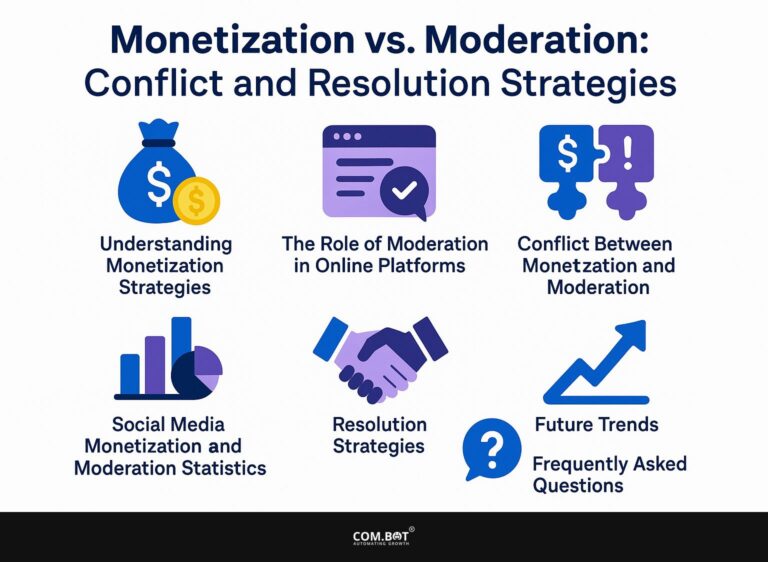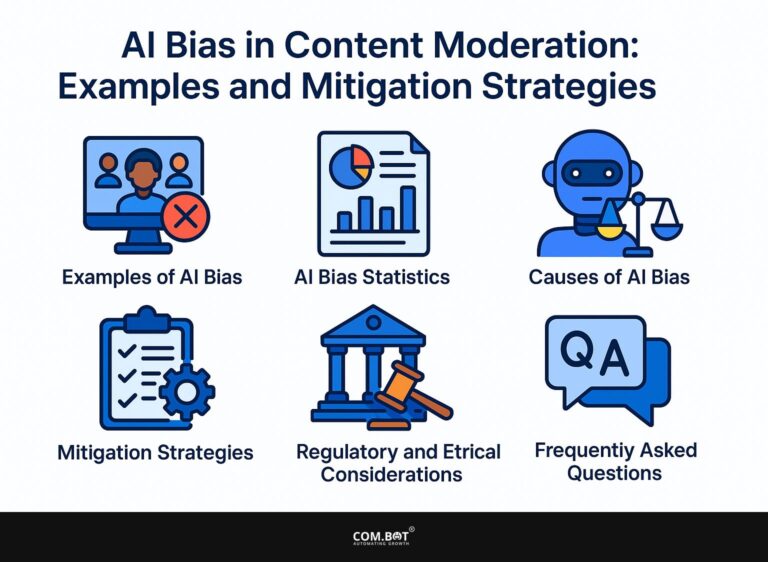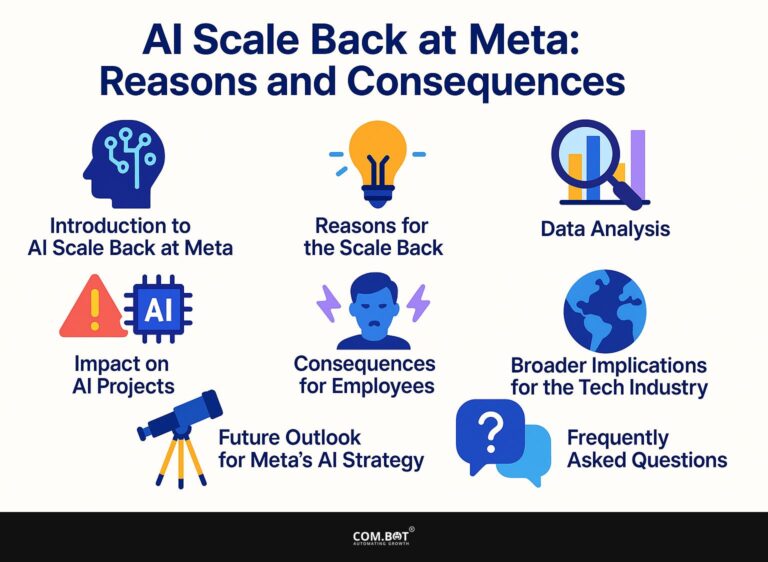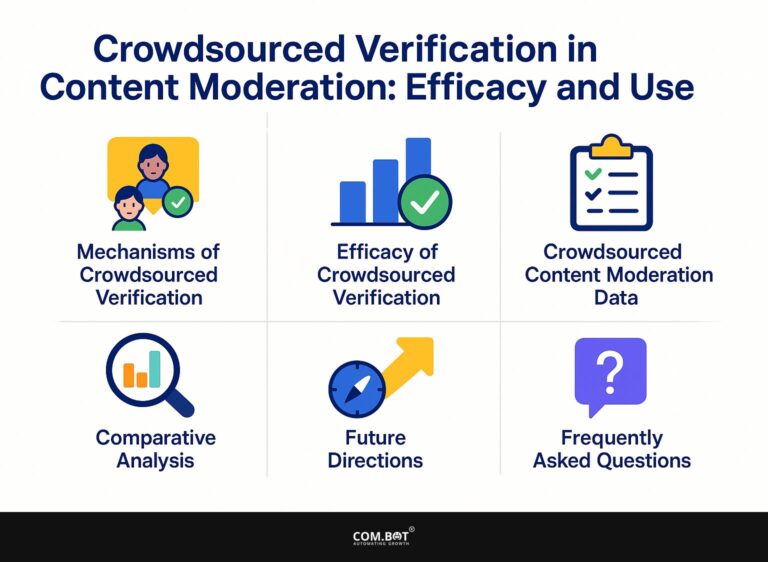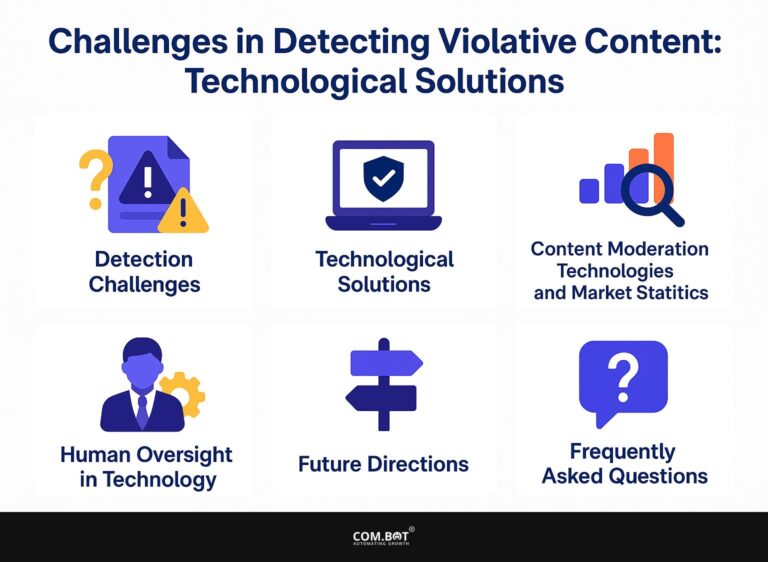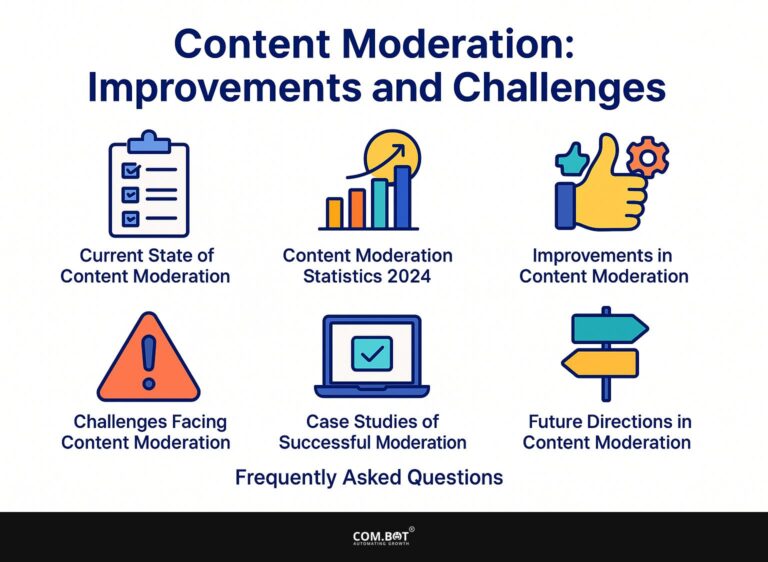Human-Centric Moderation: Importance and Implementation
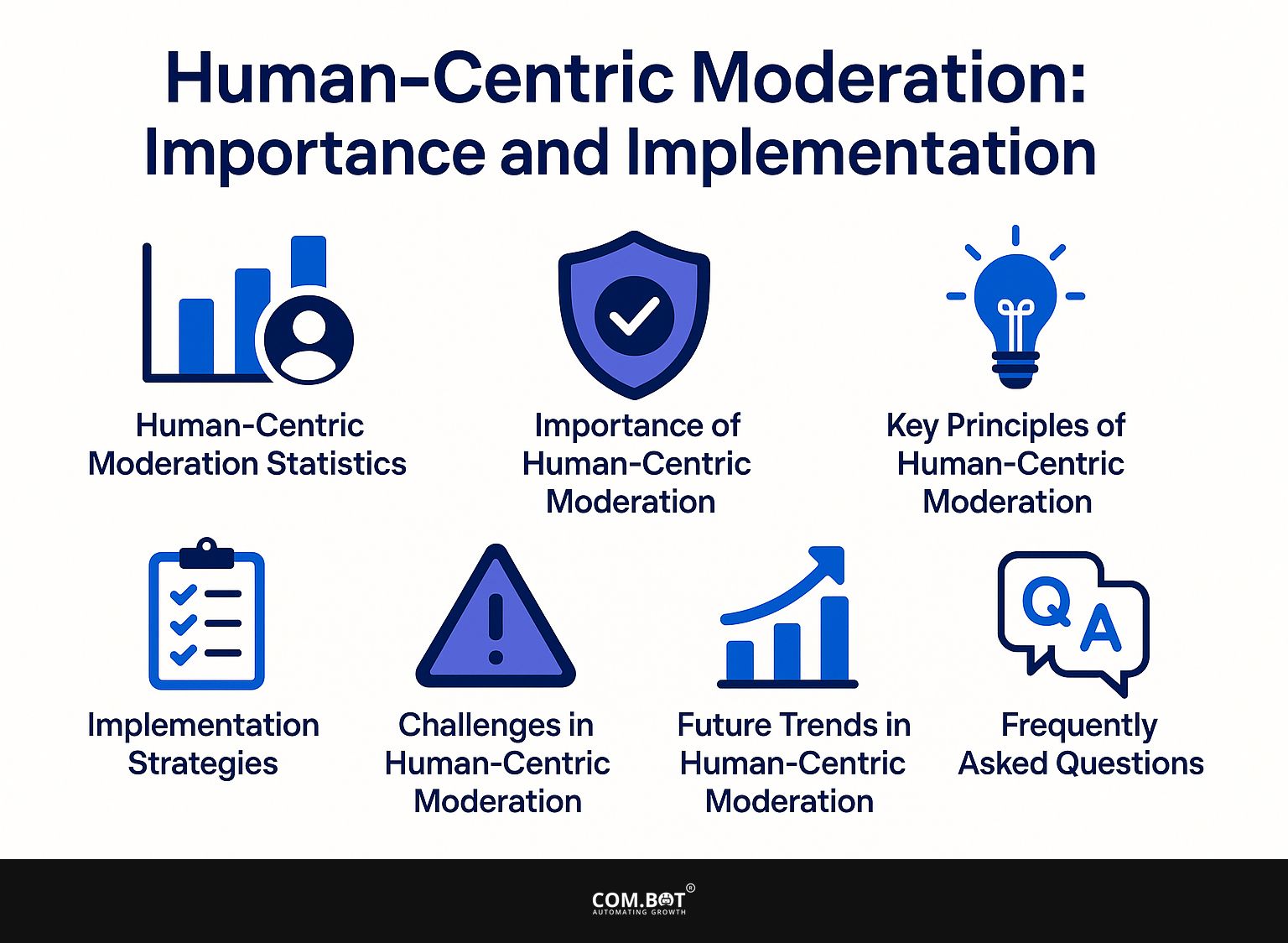
Nowadays, using moderation focused on people is more than a trend-it’s important for business as it focuses on employee wellbeing and encourages team growth. During COVID-19, we saw that focusing on people, as Gallup noted, is key to improving working conditions.
This article looks at why focusing on people is important when moderating online content. It explains how this approach can change online interactions and help make digital communities safer and kinder.
Key Takeaways:
- Human-Centric Moderation prioritizes user experience, trust, and safety through empathetic and transparent practices.
- Teaching moderators well and combining their work with technology are key to making moderation focused on people work well.
- As online communities and technology keep changing, moderation tools and strategies must change and come up with new ideas to effectively tackle challenges and keep a focus on people.
- 1 Human-Centric Moderation Statistics
- 2 Importance of Human-Centric Moderation
- 3 Key Principles of Human-Centric Moderation
- 4 Implementation Strategies
- 5 Challenges in Human-Centric Moderation
- 6 Upcoming Trends in User-Centric Moderation
- 7 Frequently Asked Questions
- 7.1 1. What is human-centric moderation and why is it important?
- 7.2 2. How does human-centric moderation benefit online communities?
- 7.3 3. What are the challenges of implementing human-centric moderation?
- 7.4 4. How can human-centric moderation be effectively implemented?
- 7.5 5. Can moderation focused on humans work together with automated moderation?
- 7.6 6. What are the potential risks of not having human-centric moderation in place?
1. Definition and Overview
Human-focused moderation is a method that highlights empathy and consideration, making sure user interactions build real connections and support emotional health. This method improves how users interact and also strengthens trust in communities.
For example, platforms can implement empathetic training for moderators, coaching them to recognize emotional cues and respond appropriately. Tools like Moderation AI analyze text sentiment, enabling moderators to prioritize cases needing urgent attention.
Incorporating user feedback surveys can also guide teams in improving moderation practices, ensuring that users feel heard and valued. By investing in these strategies, organizations create safer, more welcoming environments that encourage positive engagement.
Human-Centric Moderation Statistics
Human-Centric Moderation Statistics
Human Factors Research Moderation: Moderator Skills
Human Factors Research Moderation: Benefits of Moderation Techniques
Human Factors Research Moderation: Common Practices
The data on Human-Centric Moderation Statistics emphasizes the critical role of human factors in effective moderation, highlighting essential skills, benefits, and practices that contribute to successful outcomes in various settings. This detailed review highlights the importance of human moderators in creating secure and beneficial user experiences.
Human Factors Research Moderation showcases the importance of key moderator skills, notably impartiality and attention to detail, both rated at 100%. These skills are important for moderators to keep things fair and balanced, where decisions are made based on clear rules instead of personal opinions. Fairness guarantees that everyone is treated the same, building trust and respect in the group. Paying close attention helps moderators spot small signs in interactions, making sure that important problems are not missed.
- Benefits of Moderation Techniques: The data indicates that effective moderation techniques result in increased user safety and improved user experience, both at 100%. By actively monitoring interactions and intervening when necessary, moderators create a safe space for users, protecting them from harmful content and behavior. This safety improves how users interact, as people feel more at ease sharing their thoughts and joining conversations.
- Common Practices: The practice of active listening and non-verbal communication are both valued at 100%, highlighting their significance in moderation. Active listening involves paying close attention to what users say, ensuring their concerns and feedback are understood and addressed appropriately. Non-verbal communication, such as body language and tone, provides additional context to verbal messages, helping moderators interpret the true intent behind user interactions.
In summary, the Human-Centric Moderation Statistics highlight the essential job of human moderators who have the right skills and methods. These elements improve user safety and experience while creating a more welcoming and respectful setting. By using this information, organizations can encourage good interactions and create communities that rely on mutual trust.
2. Historical Context
Updates in moderation techniques reflect a shift from traditional leadership to methods that prioritize empathy and inclusiveness, emphasizing the importance of human connections. Historically, moderation began with authoritarian control, where leaders maintained strict oversight, often disregarding community needs.
Important events like starting feedback processes in the early 2000s changed attention to working together on decisions. The rise of social media further emphasized the value of community input, leading to methods like community-driven moderation, where members actively participate in setting guidelines.
Today, tools like Restorative Justice circles encourage conversation, helping people feel included and connected. This modern method improves user experience and also strengthens community connections. Related insight: AI Bots for Customer Support: Benefits and Satisfaction can also play a role in fostering more dynamic interactions within communities.
Importance of Human-Centric Moderation
Focusing on moderation that prioritizes people is important for creating a safe and interesting environment. This makes the user experience better and builds trust in communities. Those interested in the broader implications might find the ongoing discussion about Federal Content Moderation Legislation insightful, as it explores how policy shapes community dynamics.
1. Enhancing User Experience
By focusing on moderation that considers people’s needs, organizations can improve user experience, resulting in higher satisfaction and more community involvement. This method can significantly increase user engagement; for example, online groups with knowledgeable moderators saw a 20% increase in member participation.
Tools like Discourse and Miro offer systems for handling discussions, enabling moderators to prioritize building a community instead of only enforcing rules.
For example, employing regular community feedback sessions can help identify pain points. Sentiment analysis tools can help moderators change the tone, ensuring communications positively affect users and create a friendly environment.
2. Building Trust and Safety
Building trust through human-centric moderation creates a safer environment where users feel valued and heard, significantly improving overall engagement levels. One effective method is implementing a transparent moderation policy that outlines the expectations for both users and moderators.
For example, platforms such as Discord and Reddit have clear community rules and often update them based on user feedback. Adding features like user reputation scores can encourage good behavior and deter negative actions.
Surveys, like Gallup’s 2022 report, reveal that organizations prioritizing trust-building practices see higher user retention and satisfaction, demonstrating the long-term benefits of a trustworthy community.
3. Reducing Misinformation
Human-centric moderation actively reduces misinformation by prioritizing fact-checking processes and promoting content accuracy, enhancing overall community trust.
To implement an effective misinformation management strategy, consider partnering with established fact-checking organizations like Snopes or FactCheck.org. These partnerships can offer tools and training for moderators to spot false information correctly.
Employing tools like ClaimReview can help structure fact-checking efforts, ensuring consistency in verifying claims. Research shows that communities using these methods see misinformation drop by up to 30%, creating a more trustworthy information space.
Encourage users to report suspicious content, creating a proactive community approach to misinformation management.
Key Principles of Human-Centric Moderation
The key concepts of moderation centered on people emphasize awareness and transparency, which are the basics of effective communication strategies on modern platforms.
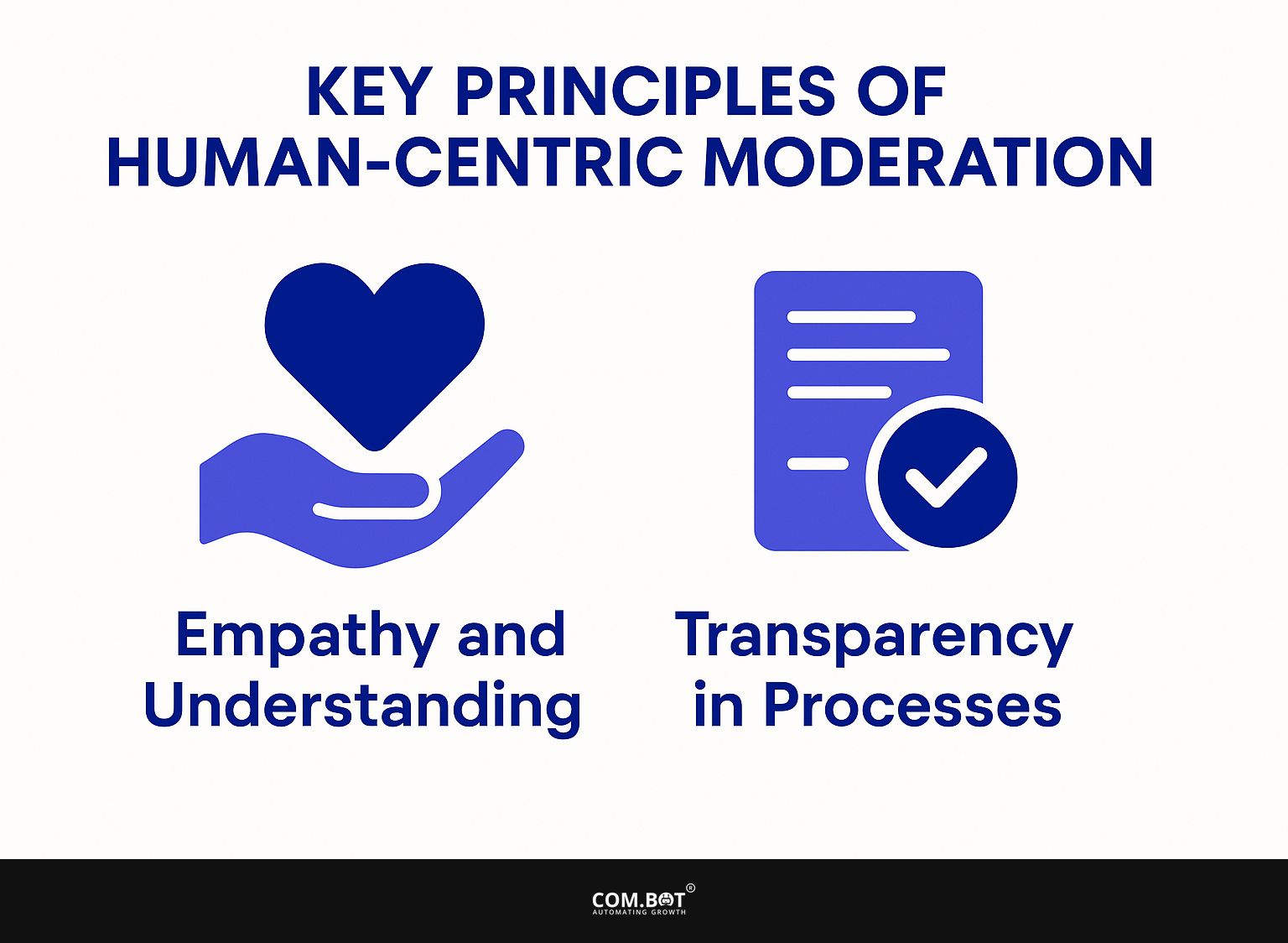
1. Empathy and Understanding
Empathy in balance means knowing what users need and how they feel, which can greatly improve emotional well-being and promote caring leadership. To successfully include empathy in moderation methods, think about organizing training sessions that use role-playing activities.
For example, moderators can simulate tough discussions with users, helping them practice responses that emphasize empathy and support. Tools like empathy mapping help moderators get a clearer idea of user feelings and needs, allowing for more detailed notes during conversations.
Regular feedback sessions-where moderators think about past experiences-can support empathetic practices, creating an environment where empathy is included in daily moderation tasks.
2. Transparency in Processes
Transparency in moderation processes builds trust, allowing users to feel confident in the rules and guidelines governing their interactions.
To make things clearer, platforms can use various specific methods.
- Publicly report moderation actions and decisions, highlighting how rules are enforced. For example, sharing monthly numbers on removed content or user appeals can make the process clearer.
- Having detailed FAQs that answer common questions about moderation policies helps people know more. Tools like UserVoice allow users to submit feedback on moderation, creating a direct line of communication.
- These steps raise user satisfaction scores and also encourage the community to help shape moderation policies.
Implementation Strategies
To put people-focused moderation into practice, moderators need thorough training, and technology should be combined with human supervision in a planned way.
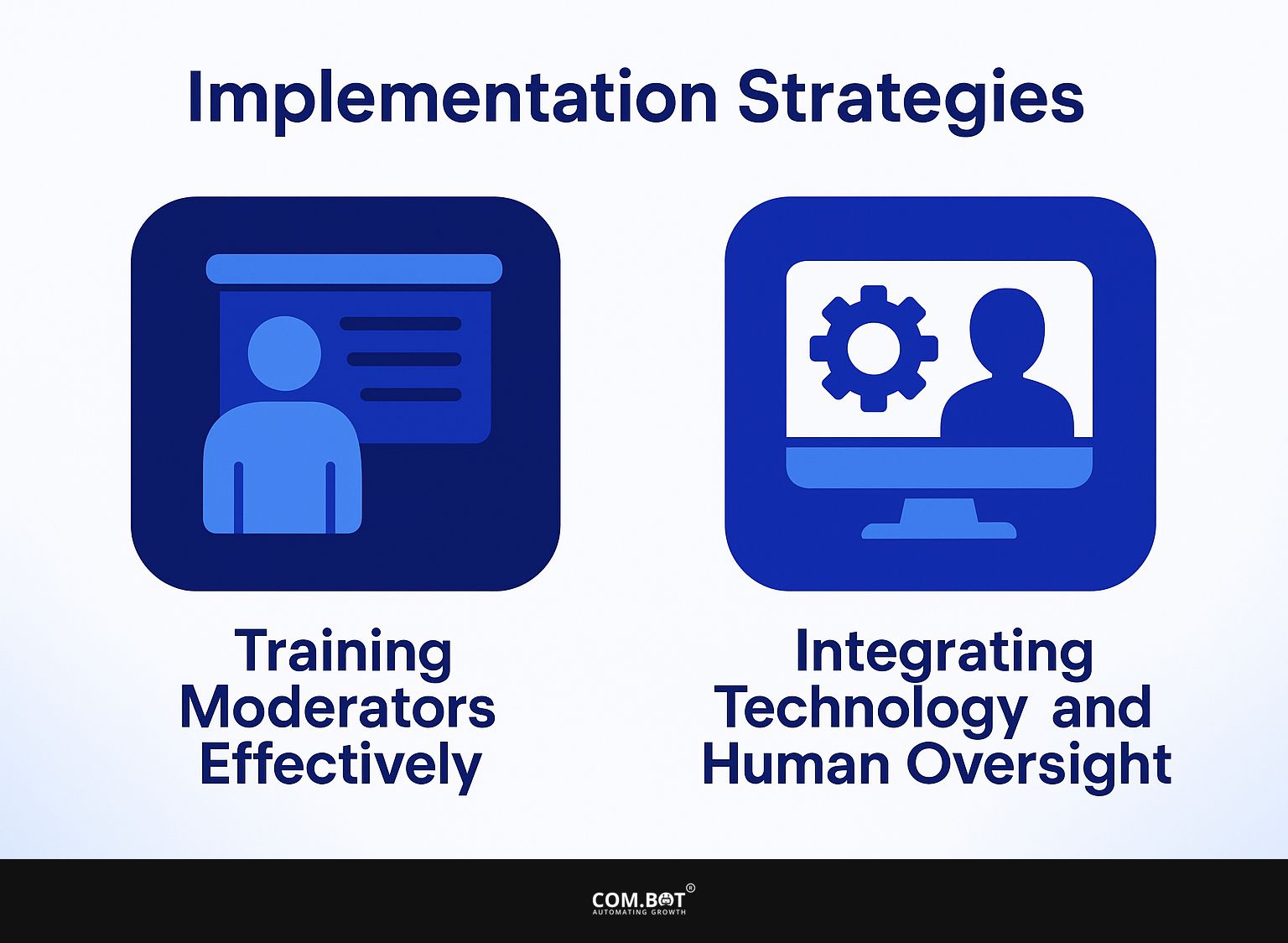
1. Training Moderators Effectively
Training moderators effectively involves providing them with the skills to understand user needs, manage conflicts, and facilitate open communication.
To create a full training program, divide it into workshops that cover recognizing emotions, handling disagreements, and improving communication skills.
For example, include exercises that improve empathy and awareness, such as acting out different situations. Recommend resources like the EHL Graduate School’s courses, which offer specialized modules in these areas.
These structured workshops, lasting approximately two to three hours each, can be supplemented with online materials and peer discussions to reinforce learning and practical application.
2. Integrating Technology and Human Oversight
Combining technology with human supervision makes moderation more efficient while keeping important human involvement. To manage discussions well, use a mix of AI tools such as ModSquad for fast replies and experienced moderators who can manage detailed situations.
For example, a company implemented a hybrid model where AI flags inappropriate content, and human moderators review these flags for context. This method cut response time by 30% and raised user satisfaction ratings by 20%. Regular training for moderators on AI updates helps them use technology well and keep a focus on people.
Challenges in Human-Centric Moderation
Although it has advantages, moderation focused on people encounters various difficulties, such as finding the right mix between machine processing and human judgment, and dealing with possible prejudices in decisions.
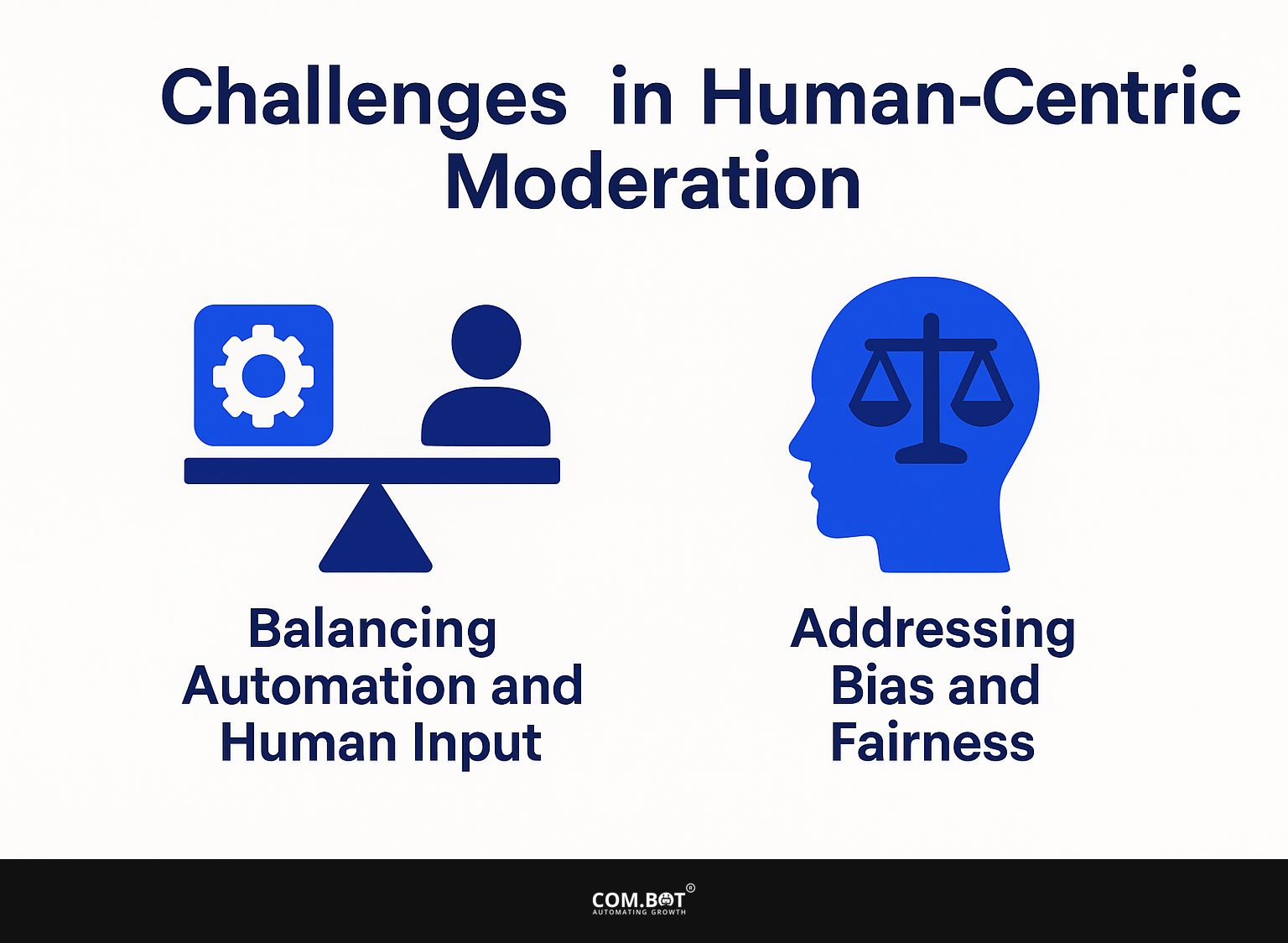
1. Balancing Automation and Human Input
Striking a balance between using machines and human effort is important; too much dependence on machines can weaken the human touch needed for good moderation. To achieve this balance, begin by implementing a hybrid approach.
Use moderation software like ModBot to handle initial filtering, which can reduce workload by up to 60%. Arrange to review automated decisions every two weeks to see how effective they are and identify situations that need human judgment.
Ask users for their thoughts on moderation results to get their viewpoints. This series of changes ensures that technology supports the essential human role in community management instead of replacing it.
2. Addressing Bias and Fairness
Dealing with bias in moderation is important for fairness and making sure users feel safe, which can improve the workplace.
To effectively cut down on bias, organizations should have moderation teams made up of people from various backgrounds, as this can lead to fairer decisions.
In addition, utilizing tools like the Fairness Toolkit allows moderators to assess their decisions against predefined fairness metrics.
Establishing consistent feedback loops encourages transparency; for instance, regularly soliciting user feedback can identify areas of concern. Sessions about implicit bias can help moderators realize their own prejudices, making it fair for all participants.
Upcoming Trends in User-Centric Moderation
Keeping a focus on users will be key in moderation practices as we move forward. It’s important to consider how to keep online spaces safe and respectful for everyone. This involves using new tools and methods to handle comments, posts, and messages effectively. By prioritizing the needs and experiences of users, we can create better and more inclusive online communities.
The way we manage online discussions will be influenced by changes in online groups and new tools that focus on keeping users healthy.
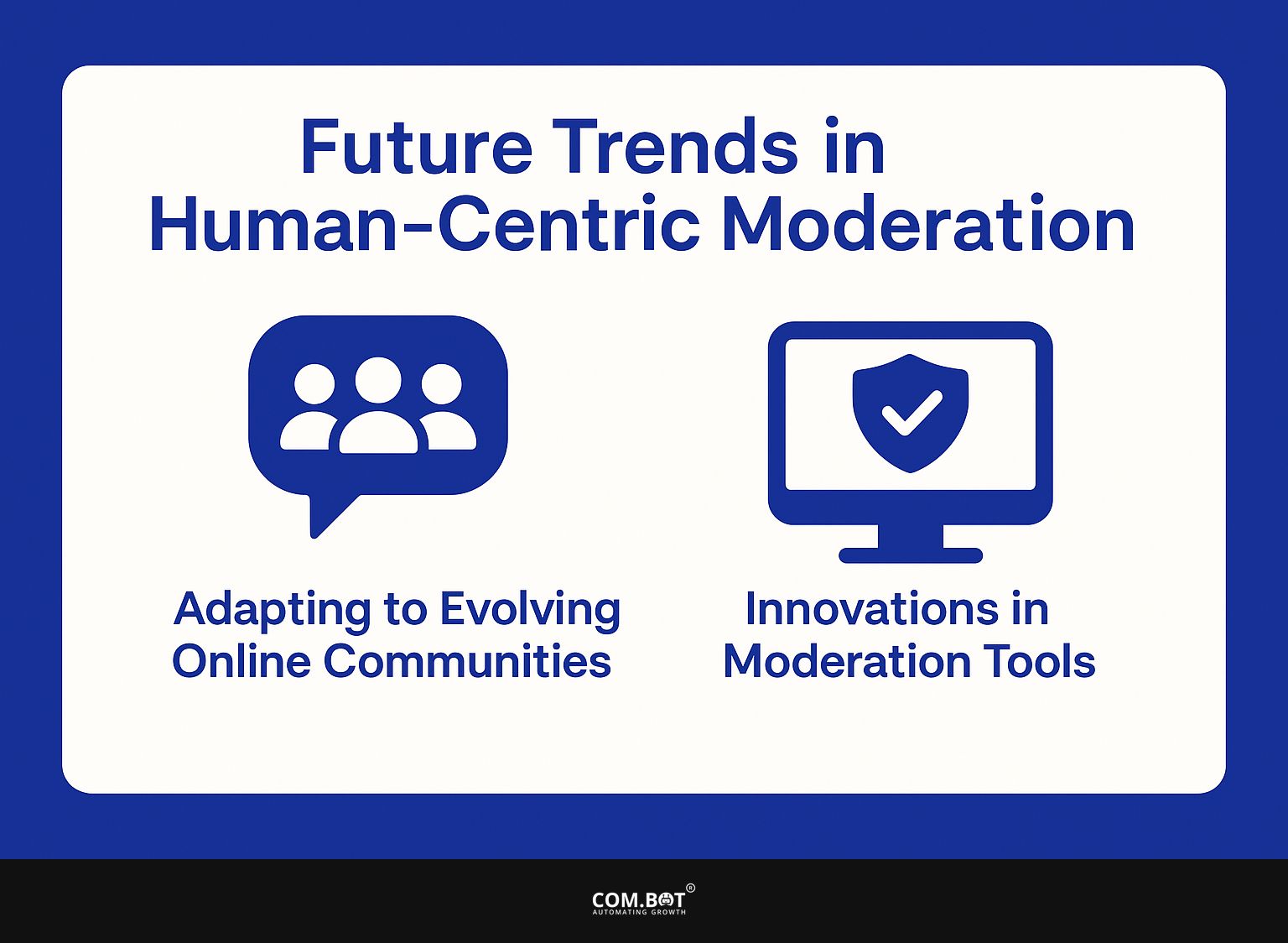
1. Adapting to Evolving Online Communities
To stay effective, moderation focused on people should keep up with shifts in online communities, promoting interaction through quick and thoughtful approaches.
- One useful approach is to regularly ask the community about their experiences, needs, and suggestions through surveys.
- Use tools such as SurveyMonkey or Google Forms to simplify this process and make it easy to use.
- Creating dedicated forums or feedback channels allows for ongoing dialogue, enabling moderators to address concerns in real-time.
- Adding analytics tools, like Google Analytics or social media data, can give information about member interactions and peak activity times. This helps you adjust moderation efforts to be more effective.
2. Innovations in Moderation Tools
New moderation tools, such as AI-driven analysis systems and sentiment analysis tools, are expected to improve human moderation. These tools help companies improve their moderation plans and react better to community feedback.
For example, platforms like Brandwatch use sentiment analysis to evaluate user emotions in real-time, helping moderators prioritize urgent issues. Similarly, tools like Modulate provide voice moderation by detecting toxic behavior during live interactions.
Companies like Discord have used these technologies effectively, leading to quicker replies to community issues while keeping a friendly atmosphere. This approach improves user experience by actively interacting with users.
Frequently Asked Questions
1. What is human-centric moderation and why is it important?
Human-centric moderation is the process of moderating online content and interactions using a human-based approach. It focuses on human choices and decisions rather than computer algorithms. This matters because it makes moderation more accurate and fair. People can understand the context and intent of content better than machines.
2. How does human-centric moderation benefit online communities?
Human-centric moderation promotes a positive and safe online environment for users. It helps to reduce the spread of harmful or inappropriate content, and encourages respectful and productive discussions. This can lead to better engagement and retention of users, as well as a stronger community culture.
3. What are the challenges of implementing human-centric moderation?
One challenge is the cost and time associated with having humans moderate content. It’s important that moderators are well-trained and have clear guidelines. Another challenge is maintaining consistency and avoiding bias in moderation decisions.
4. How can human-centric moderation be effectively implemented?
Effective implementation of human-centric moderation involves having a well-defined and transparent moderation policy, proper training for moderators, and regular evaluation and improvement of the moderation process. It is also important to have a strong support system for moderators, as the job can be emotionally taxing.
5. Can moderation focused on humans work together with automated moderation?
Yes, moderation by people can work well with systems that automatically check content. Using machines can help manage a large amount of content fast. However, humans offer a more thorough and context-sensitive approach. This combination can improve the overall efficiency and accuracy of moderation.
6. What are the potential risks of not having human-centric moderation in place?
Without human-centric moderation, there is a higher risk of harmful or inappropriate content spreading and negatively impacting the community. It can also lead to biased or unfair moderation decisions, resulting in user distrust and potential PR crises for the platform. Without people overseeing, it might be hard to manage tricky cases or deal with sensitive content well.
